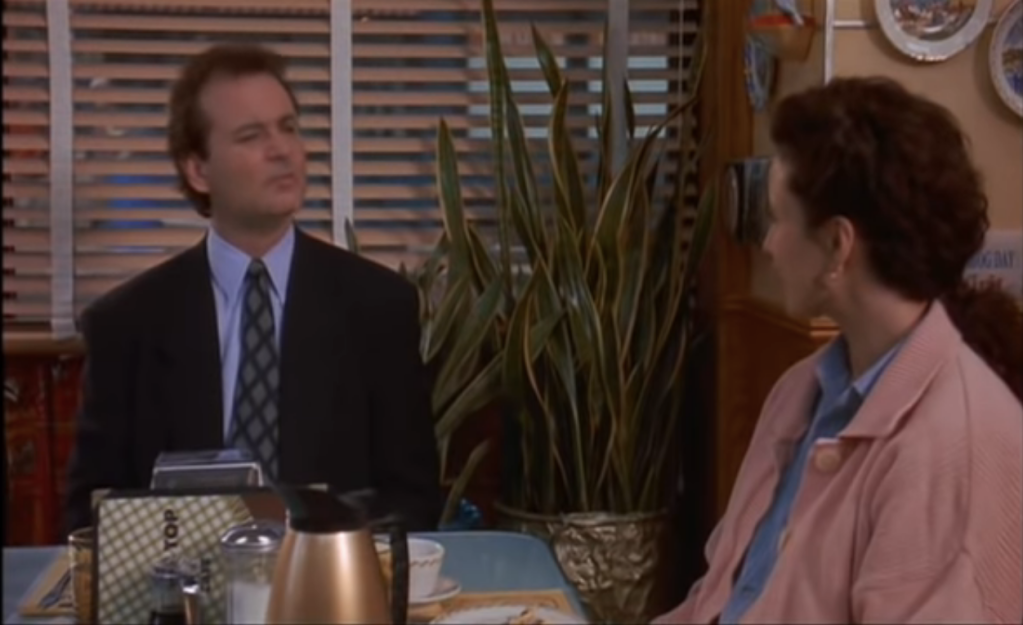Groundhog Day is a 1993 movie starring Bill Murray. Murray portrays Phil Connors, a cynical television weatherman covering the annual Groundhog Day event in Punxsutawney, Pennyslyvania, who becomes trapped in a time loop forcing him to relive the same day repeatedly.
This short blog is a deep dive into Groundhog Day as an analogy for people living with pain. Those of you that have seen Groundhog Day, whilst a comedy, has a deeper philosophical message about life, adversity, control and suffering.
In terms of pain, we could argue there are two types of pain. One kind you feel when it comes out of the background and presents itself. The second kind you feel when something is not there. Persistent pain can start off as a being represented by the first kind. Uninvited, unwanted, bodily sensations seem to be saying that something is wrong; something can and must be fixed. The logical thing is to try and understand what is going on – and get it fixed. We can see this in the movie Groundhog Day, where Murray’s character tries to understand what is going on to eventually he becomes stuck in this perseveration loop ultimately getting to a point where he becomes so worn down by repeatedly living the same day he experiences depression and even takes his own life. What we see by the end of the movie is Murray’s character realising the importance of what he has rather than what he doesn’t have. This can be the challenge with suffering associated with pain.
How does physiotherapy contribute to the perpetuation of suffering?
As we see in Groundhog Day, Murray’s character’s life is effectively placed on hold. He lives the same day over and over again not realising that rather than continuing with a life he had, seeing it through a different lens and what options are available to him. Living with persistent pain can mean that life is put on hold. Compromises need to be made while a fight against pain is fought and won. Much like what Murray’s character attempts in Groundhog Day. Persistent pain by it’s very definition, is pain that doesn’t go away. If you try to solve a problem that’s unsolvable, you get stuck in a repeating loop – much like Groundhog Day.
So how does physiotherapy contribute? Well, let’s take the 60 year old living with a 2 year history of back pain who recalls what things were like for their working life 10, 20, maybe even 30 years ago. That they experienced a bout of back pain and they would just get on with it. Why is this situation different? Apart from the obvious (age if you hadn’t noticed) there are likely many reasons why. When this person see’s the physiotherapist, who believes they can help by treating the person with acupuncture or manual therapy, prescribing exercise or even using explain pain there is an intention to restore the person back to how they once were, paradoxically perpetuating the person’s suffering – or Groundhog Day (What you might not have considered is by the physio providing the false hope of restoration to a life ONCE lived, they too are stuck in Groundhog Day). You see it in the movie again, Murray’s character makes some traction (the short term relieving intervention) but is then slapped in the face or finds he wakes up once again, reliving the same day (the pain comes back).
So what’s the answer?
The issue with the above question is that by asking it, we fall back into the trap of trying to fix a problem that is unsolvable. One thing is for sure, I am not telling you to just give up. I am more curious to identify what possibilities or opportunities are available if you stop, breath, take a step back and pour some of that amazing amount of time and energy from your struggle and fight with pain, for which I have the upmost respect and want to commend you for, into a life that’s worth living. What if you were to direct some of that energy and time into living in the now? To find ways that bring you joy and meaning in other ways? Not living the way you once did, because, pain or not, those days are gone. I am not asking you to stop looking for the cure for your pain, this is a pause, a time out, a breath, and re-evaluating if you want to carry on the struggle.
Enjoy the clip
I want to thank Laura Rathbone Van Meurs for helping me to consolidate some thoughts about physiotherapy, Acceptance and Commitment Therapy and whether we are perpetuating Groundhog Day for our patients.


Leave a comment